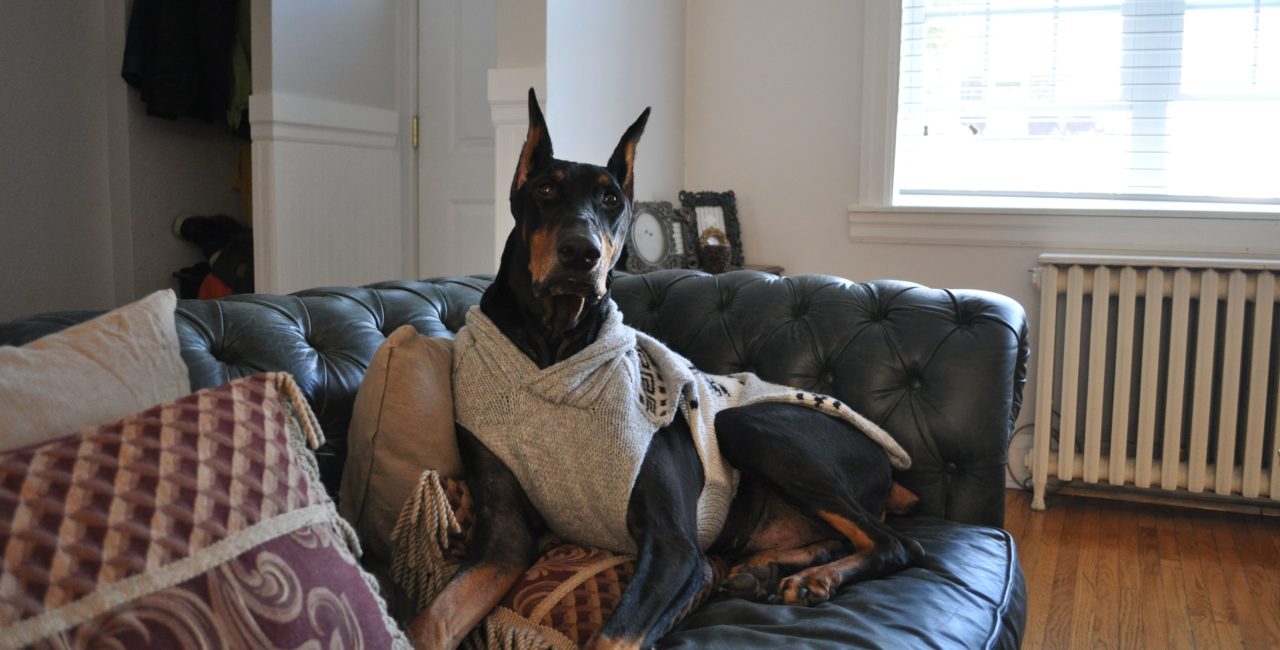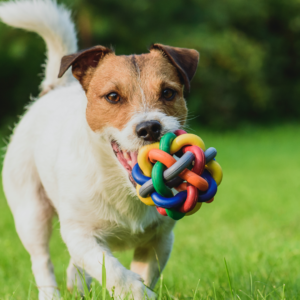Separation anxiety, stress and fear. All things both dogs and their owners can experience when living with a dog who suffers from anxiety. There are books, articles and even videos designed to help owners and dogs alike cope with the stresses of anxiety; and although some methods are successful, some of us are still asking the question “what now?”
Unlike my previous blogs, Ryder has helped inspire this post. As long as I have owned Ryder, he has suffered with some sort of anxiety on differing degrees. When he first started his “blanky sucking” habit, I thought it was just something cute that he did. It wasn’t until I learned he was exhibiting this behavior to cope with his anxiety, that I realized it was a necessity for him. Still to this day seven years later, I can’t with hold a blanket or freely leave my house without puppy proofing. Even then I am bound to come home to something chewed or worse yet something missing.
Of course this is a major cause of concern for many reasons. Being a veterinary technician, my first fear is always foreign body. What did he chew, how much did he ingest and is there a chance if will block his intestinal tract? Is it worth it to induce vomiting at this point? Once my tech side dissipates and I feel to some degree I’m in the clear, the more concerning and damaging part of this catastrophe hits. “How do I get a handle on this?”
In my opinion, the stress on the human animal bond is by far is the biggest challenge when living with a dog that has anxiety. So of course the next question is what do we do? I could write about all the recommendations, medications and training, but after seven years of fighting this anxiety with Ryder, I have learned a few tips and tricks based on my own personal experience and thought they would be an interesting incite.
1. Routine: Of all the trials and errors I have encountered over the years, I have learned that routine above all has helped to solve a lot of problems. Allowing Ryder to know exactly what to expect everyday has helped him learn to cope. Although he’s not thrilled with the idea I am leaving for the day, he also knows it’s coming. He knows that he gets his walk, then his breakfast, and then his morning snuggles. I try and keep things consistent so I don’t have to worry about him stressing over the unknown.
2. Exercise: A sleepy dog is a happy dog! Because my boyfriend and I tend to work long hours, we have found that allowing Ryder to get out in the morning and stretch his legs and exercise his mind before a long day, helps him release pent up energy and not allow his boredom to get the best of him.
3. Cues: As much as we would love to deny it some days, dogs are quite clever. They catch on to cues quickly and don’t tend to forget them. Something as simple as putting on a sweater or moving my keys triggers Ryder to start pacing. I try and change things up daily and desensitize him to specific cues. I will hang my jacket in different places, move my keys to several locations in a day so he doesn’t always associate the jingle with me leaving, and will put indoor shoes on so he doesn’t put two and two together. Although he still realizes these things are an enviable sign that at one point I’m leaving, he doesn’t tend to get as stressed out as he previously would have.
4. Safe Spots: Many people look at crating as a horrible torture for dogs. I have learned over the years that crating or creating “safe spots” for Ryder have kept him from trouble and eating things he shouldn’t. Admittedly, this is something I have just recently put to practice again in my house. I had always hoped Ryder would one day do well having free roam of the house so he could lay where he wished and move around at his leisure. A pair of ingested Dr. Martin boots later and I learned a very serious lesson. Dogs are never too old to be crated. In fact, this leads back to having a routine and maintaining consistency lifelong. Because Ryder spends 100% of his time with his sister Scout, I didn’t want to separate them. So my goal became finding a place in my house that Ryder loved and I could make his own. In my case, I now share my bedroom with 2 full grown Dobermans.
5. Doggie Proofing: It doesn’t seem to matter how old he gets, if he can get into jackets, pants, garbage’s, or his nose on top of a table he will eat whatever he can get his mouth on regardless if I’m there or not. Anxiety and stress can cause dogs to act out and find something to help cope with what’s going on. It’s usually something they can put in their mouth. So I decided a long time ago that for my sanity, everything was to be at hip height and I haven’t looked back since.
6. Us and them alike: I think the biggest thing I have learned while living with an anxious dog, is that being anxious myself doesn’t help anything. Ryder’s anxiety will automatically increase if he knows I’m anxious or stressed, so for him, I have learned to try and stay calm when leaving home, or even bringing him into situations I know can be stressful for him. My feelings reflect on him and anything I can do to reduce his anxiety I will. I also make time for him on a daily basis no matter how busy I am. I know that despite my best efforts, he still has episodes of anxiety while I’m gone, and all he really wants is to be with me. I reward him for not eating my bed, by engaging with him during meal and play time. I put aside special time every night to allow him to snuggle up and get as close as he wants to me.
Although anxious dogs can be a challenge, Ryder has taught me a great deal about being patient and staying calm. I know he will never be rid of his anxiety, but doing what I can to help him cope has not only improved his quality of life, but has bettered our bond and we enjoy our cuddles that much more.




